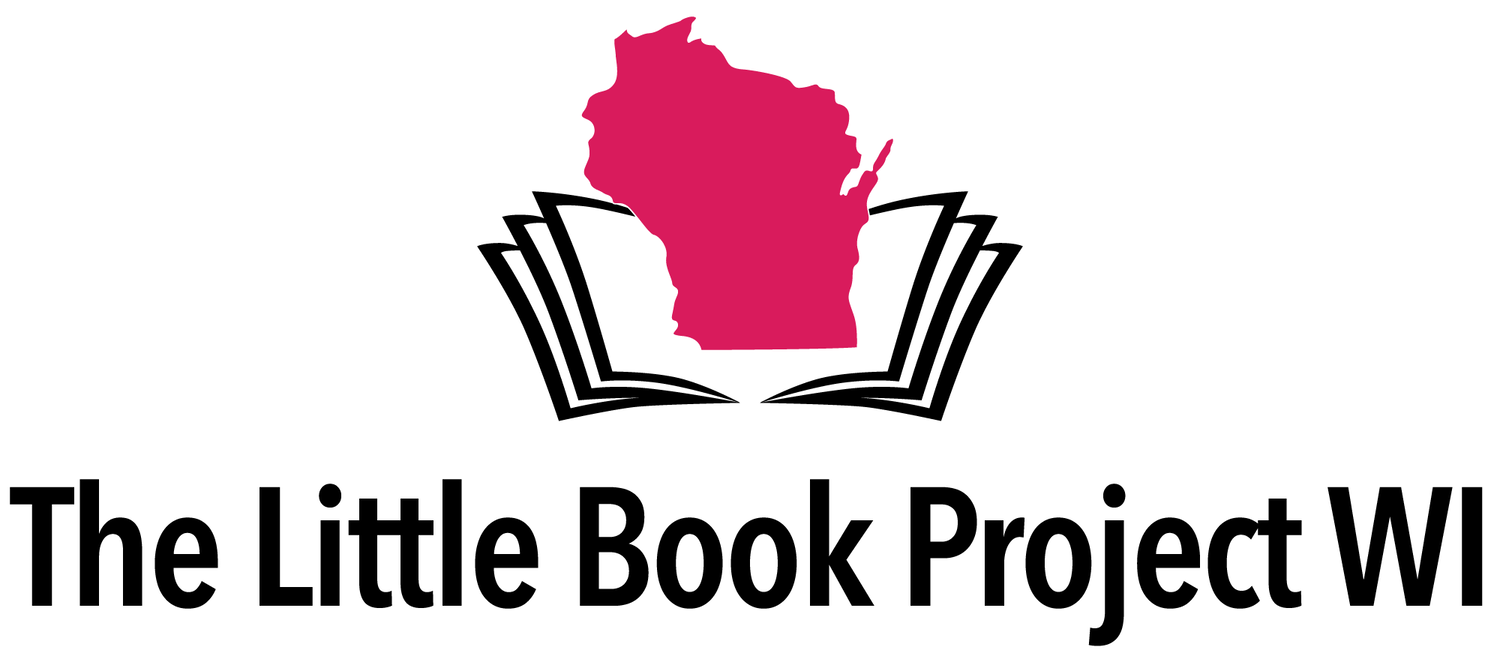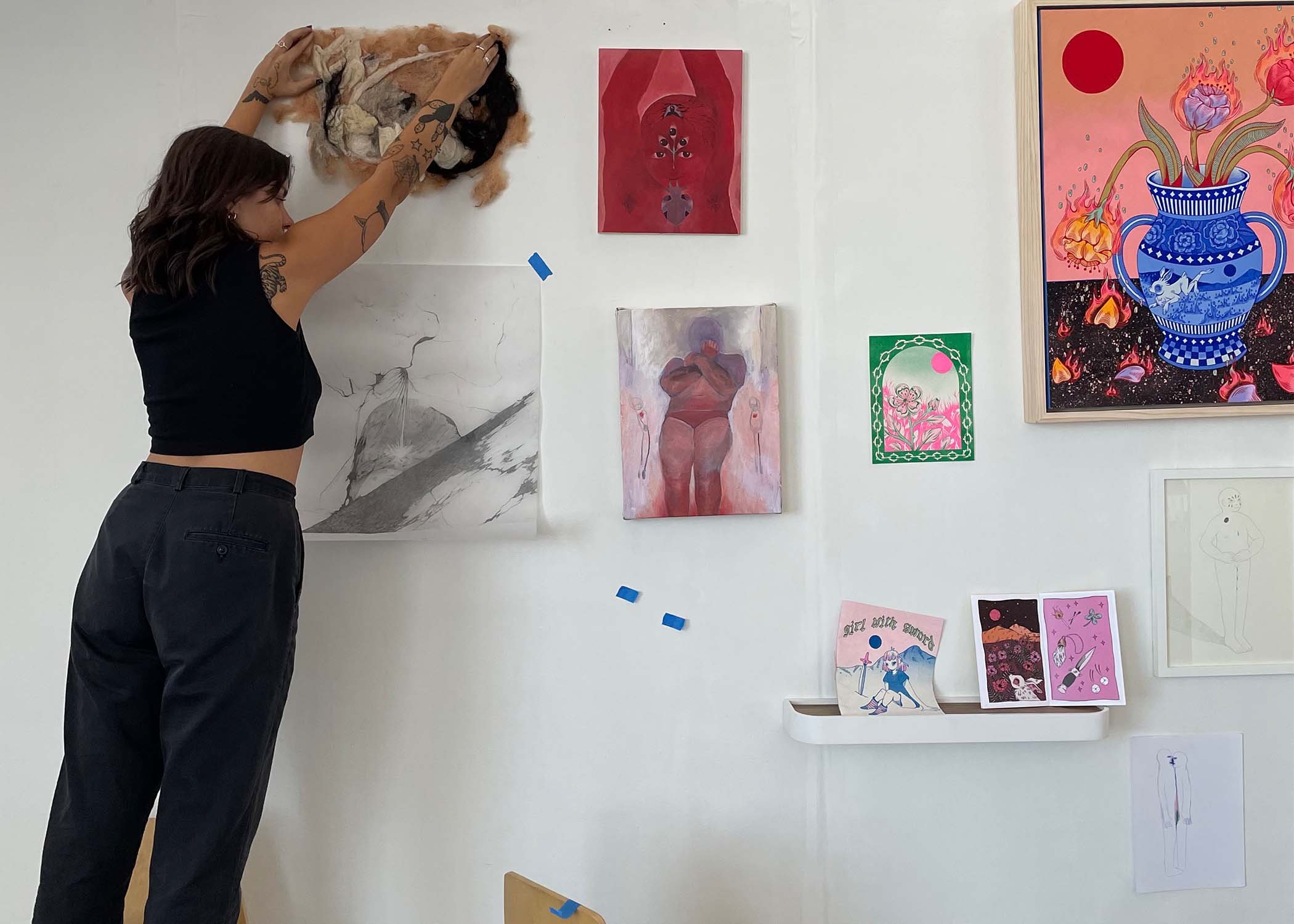Artist Profile: Melissa Mursch-Rodriguez
Melissa Mursch-Rodriguez is a Milwaukee-based creative whose practice exists between the realms of fiber arts, zinemaking, poetry, and curatorial programming. She finds herself at the intersections of identities as a mixed Chicana queer woman, which she parses, prods and praises through her work. Regardless of the vehicle used, she aims to share her experiences and vulnerabilities to platform those of others in hopes of creating community and connection. She is the editor and founder of Moody, a bi-monthly zine featuring work by queer and BIPOC creatives, and frequently curates exhibitions centering marginalized voices.
1) Who are 2 or 3 inspirations that have supported (or challenged) your growth and curating process in the past several years since starting Moody?
When I was first thinking up Moody, I did a lot of research into other submission-based zine publications. One of the very first I discovered (I think maybe before I even started toying with the idea of my own zine), was St. Sucia—a publication featuring a variety of mujer literature and art. I loved the letter from the editors, the mix of work and the community it put together in a zine. There's a clear inspiration from that project in what I have created in Moody.
In a broader sense, one of the first introductions I had to zines and zine history was Riot Grrrl. As a kid, I was constantly collaging the covers of all of my notebooks for school, so the "DIY" aesthetic of Riot Grrrl's photocopied zines immediately stood out to me. I was also broadening my understanding of grassroots movements at the time, and learning about such an accessible way to spread knowledge (or anything you can print on a page) was really impactful to me in zinemaking, my personal artwork and curatorial projects. In a way, early photocopied zines also presented some challenges to me when creating Moody. I wanted to find a way to keep the essence of these fast-produced and cheap booklets, while also honoring the art of contributors and not undervaluing the zine as an art object. Moody still lives somewhere in the middle of OG zines and artist books, which is something special about it.
2) Would you be willing to share one of your first memories of engaging with a zine?
I first learned about zines early on in my college career at Peck School of the Arts at UW-Milwaukee. I worked at an amazing space (on campus) called the Studio Arts & Craft Centre where we had a special zine printing service and lots of zine programming. Most of my zine making at the time was dabbling in zines as gifts for our coworkers when they graduated or for different class projects. But after graduating from college, my focus eventually shifted to them due to their accessibility when creating with fiber arts — my focus in school — wasn't always something I could do. I was also exploring poetry and writing much more, which I continue to feel is a great companion to visual work. I didn't learn much about how to interpret visual art before college and know a lot of people who didn't either. So writing or something like a zine is a great way to invite viewers in who may be intimidated by other art forms.
3) How have your own personal art practices changed as the zine has taken off?
My personal art practice shifted toward curating after college. Moody was an extension of that when the pandemic hit and we could no longer curate in person. Since the zine has taken off — though I have had great opportunities to curate again in physical spaces — I've focused a lot more on print and even design. Through grants Moody has been awarded, I now own a risograph printer that we use for all of our covers and try to share for community use often. In all honesty, running such a big and growing endeavor has meant my personal practice in fiber arts and other mediums has dwindled a bit. But as time goes by, I am making plans to delve into that side of my art more while scaling back on Moody without losing the platform and community in the process. I think balance is a near-constant challenge for artists (and really everyone). But we can always keep working at it.
4) What are 2 to 3 exhibitions, concerts, books and/or book talks, spoken word events and/or films you're hoping to check out this season (through early 2024 or so) in Wisconsin or virtually?
I cannot wait to visit the Kohler Arts Center to see Cloth As Land and Cloth Origins! The focus of my BFA was fiber arts, and any textile work still excites me just as much as when I first discovered it in college. And — as with every year — I'm looking forward to tuning into Woodland Pattern's Annual Poetry Marathon in January. I've been honored to curate an hour for Moody in this Marathon for the past three years. And watching what past contributors share, in addition to the wide variety of other readers, is always a treat.




